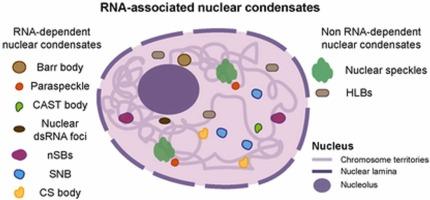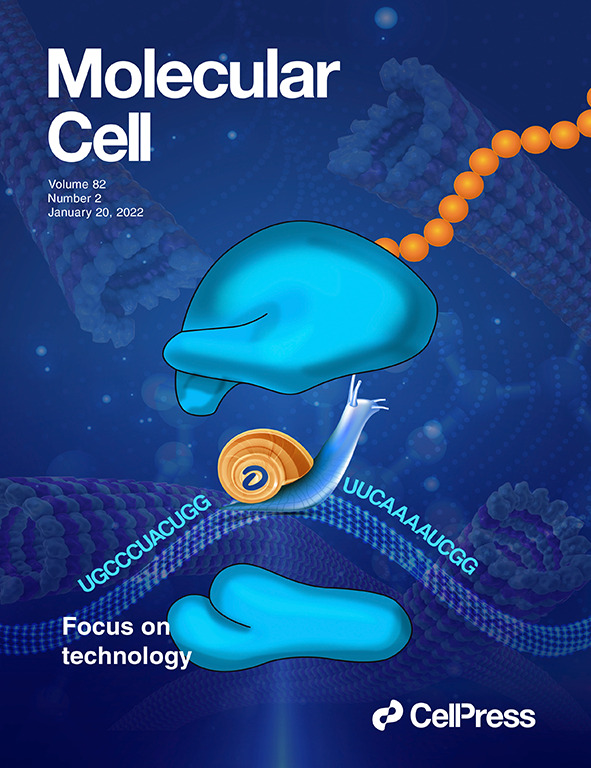rna相关核凝聚物:细胞核控制rna的地方。
IF 6.5
3区 生物学
Q2 BIOCHEMISTRY & MOLECULAR BIOLOGY
引用次数: 0
摘要
非编码rna (ncRNAs)是通过控制染色质结构和基因表达来调控细胞过程和应激反应的新兴调控因子。最近的研究表明,这些ncRNAs的功能与rna介导的核凝聚体密切相关,核凝聚体是由液-液相分离(LLPS)形成的无膜隔间,为基因组组织以及转录和转录后调控提供了一个专门的亚核环境。rna介导的核凝聚物的破坏越来越多地与人类疾病,包括神经退行性疾病和癌症联系在一起,强调了它们在维持细胞稳态中的重要作用。高分辨率显微镜和高通量测序技术的进步,通过鉴定相关的RNA分子,并在单核苷酸分辨率上提供RNA-蛋白相互作用的细节,阐明了核凝聚物的亚室结构和遗传成分。我们现在了解到,ncRNAs作为支架,招募具有内在无序结构域的rna结合蛋白(rbp)来触发LLPS的成核事件,导致核凝聚物的形成。在这篇综述中,我们总结了rna和rbp如何通过LLPS参与rna介导的核凝析物形成并支持其调节功能。本文章由计算机程序翻译,如有差异,请以英文原文为准。

RNA-associated nuclear condensates: Where the nucleus keeps its RNAs in check
Noncoding RNAs (ncRNAs) are emerging regulators of cellular processes and stress response by controlling chromatin architecture and gene expression. Recent studies have revealed that these ncRNAs functions are closely associated with nuclear condensates, membrane-less compartments formed by liquid-liquid phase separation (LLPS) that provide a specialized subnuclear environment for genome organization as well as transcriptional and post-transcriptional regulation. Disruption of RNA-mediated nuclear condensates is increasingly linked to human diseases, including neurodegenerative disease and cancer, emphasizing their essential role in maintaining cellular homeostasis. Advances in high-resolution microscopy and high-throughput sequencing have elucidated subcompartmental structures and genetic components of nuclear condensates by identifying associated RNA molecules and providing the details of RNA-protein interactions at a single-nucleotide resolution. We now understand that ncRNAs act as scaffolds that recruit RNA-binding proteins with intrinsically disordered domains to trigger the nucleation event for LLPS, resulting in the formation of nuclear condensates. In this review, we summarize how RNAs and RNA-binding proteins contribute to RNA-mediated nuclear condensate formation via LLPS and support their regulatory functions.
求助全文
通过发布文献求助,成功后即可免费获取论文全文。
去求助
来源期刊

Molecules and Cells
生物-生化与分子生物学
CiteScore
6.60
自引率
10.50%
发文量
83
审稿时长
2.3 months
期刊介绍:
Molecules and Cells is an international on-line open-access journal devoted to the advancement and dissemination of fundamental knowledge in molecular and cellular biology. It was launched in 1990 and ISO abbreviation is "Mol. Cells". Reports on a broad range of topics of general interest to molecular and cell biologists are published. It is published on the last day of each month by the Korean Society for Molecular and Cellular Biology.
 求助内容:
求助内容: 应助结果提醒方式:
应助结果提醒方式:


